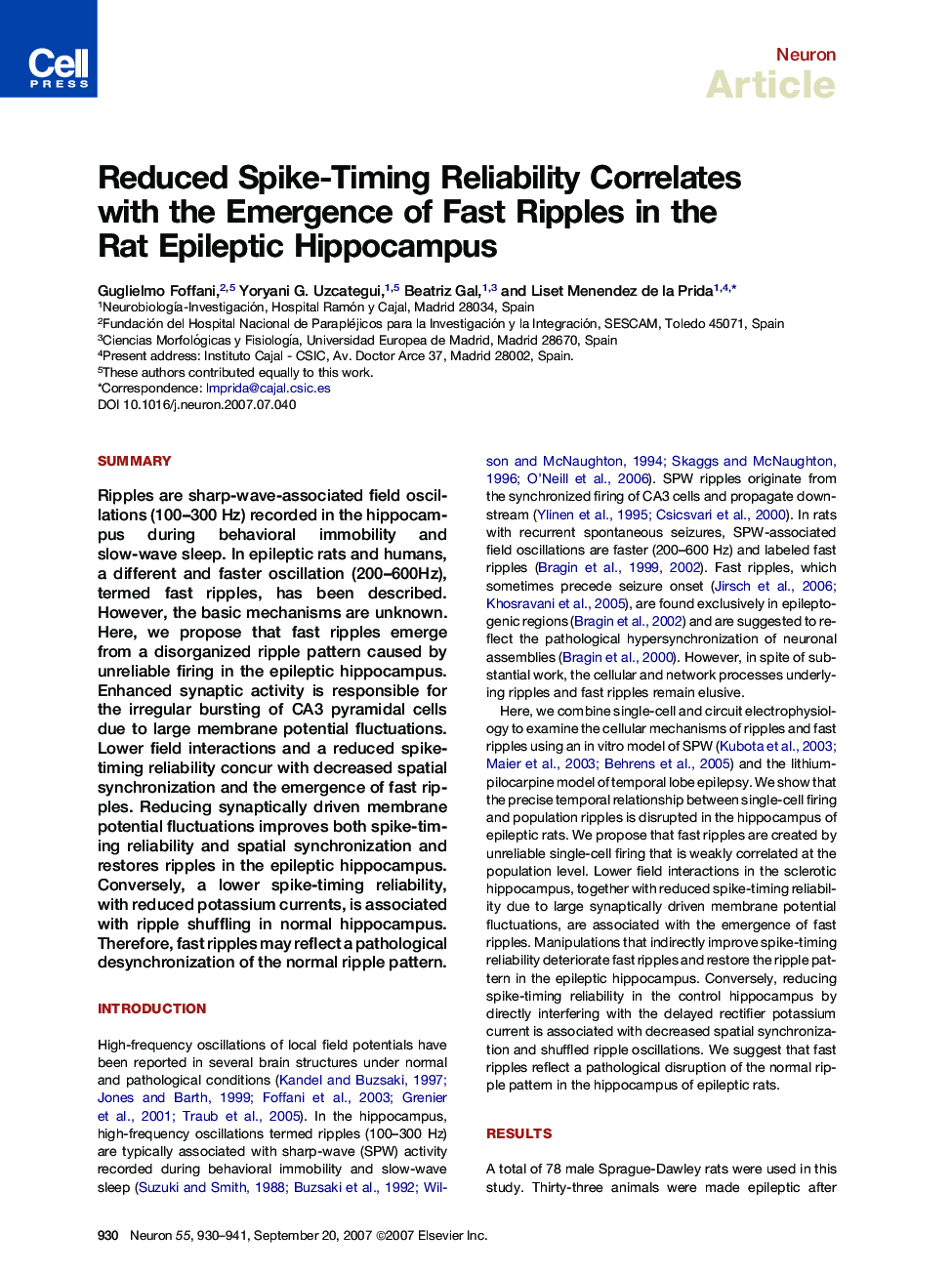| Article ID | Journal | Published Year | Pages | File Type |
|---|---|---|---|---|
| 4322692 | Neuron | 2007 | 12 Pages |
SummaryRipples are sharp-wave-associated field oscillations (100–300 Hz) recorded in the hippocampus during behavioral immobility and slow-wave sleep. In epileptic rats and humans, a different and faster oscillation (200–600Hz), termed fast ripples, has been described. However, the basic mechanisms are unknown. Here, we propose that fast ripples emerge from a disorganized ripple pattern caused by unreliable firing in the epileptic hippocampus. Enhanced synaptic activity is responsible for the irregular bursting of CA3 pyramidal cells due to large membrane potential fluctuations. Lower field interactions and a reduced spike-timing reliability concur with decreased spatial synchronization and the emergence of fast ripples. Reducing synaptically driven membrane potential fluctuations improves both spike-timing reliability and spatial synchronization and restores ripples in the epileptic hippocampus. Conversely, a lower spike-timing reliability, with reduced potassium currents, is associated with ripple shuffling in normal hippocampus. Therefore, fast ripples may reflect a pathological desynchronization of the normal ripple pattern.
